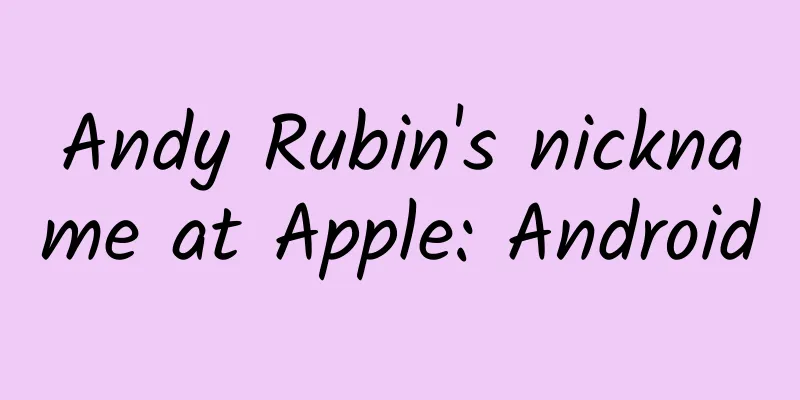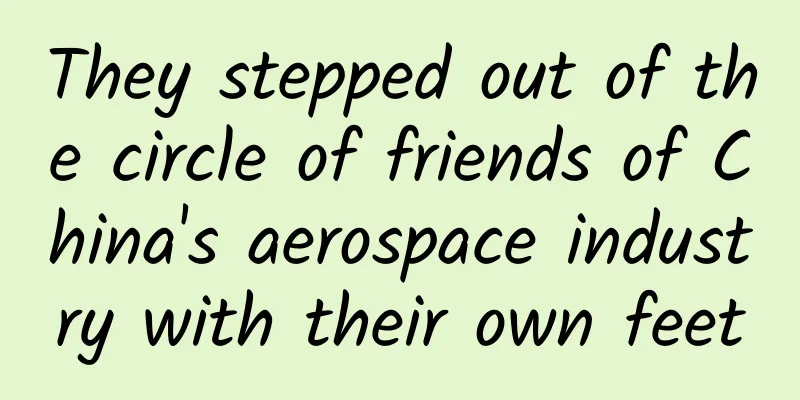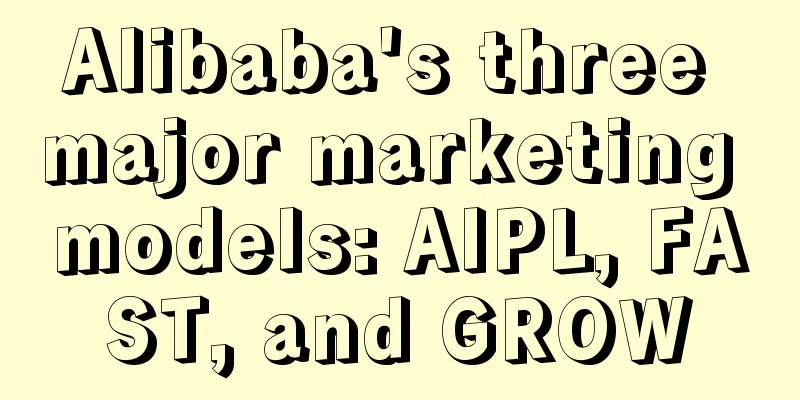Andy Rubin's nickname at Apple: Android

|
Robert Scoble, a famous American technology blogger and technology evangelist, once broke the news that Andy Rubin was about to leave Google and join a startup team called CloudCar. But Rubin quickly responded that CloudCar was a friend's startup project and he was just providing free office space. Rubin said, "I have no plans to leave Google." Now that Rubin has left Google and is no longer responsible for the development of Android, it is unknown what will happen in the future. There are more things we don’t know: The Verge revealed that Android was actually a nickname given to Rubin by his colleagues when he was working at Apple because he was too obsessed with robots. That was in 1989. Rubin seemed to like the nickname very much. He later bought Android.com as the domain name for his personal website, which he used from 2004 to 2008. When Rubin joined Google, Android.com became the home of Android. If you use Google Web Snapshot, you can still see what Andorid.com looked like back then. The following pictures are from Stray Pixels: In 2004, Rubin bought the domain name, and Android.com was his personal website. The first link on the page was connected to Danger's homepage. At that time, Rubin was the CEO of Danger. In May 2004, a metal figure suddenly appeared on Android.com, which looked very sci-fi. Maybe Android was already a company at that time, but it was not public. Since then, this metal figure has appeared from time to time and not from time to time. In June 2004, the metal portrait returned. After clicking it, a cartoon will appear, describing the story of ants quarreling, with a humorous ending: "A lazy ant destroyed the entire earth's ecology." On April 11, 2005, three maps with marked locations appeared on Android.com, one for Seattle, one for Boston, and one for Palo Alto. The meaning of this map is unclear. Later, some people speculated on the meaning behind this picture: Danger's company was headquartered in Palo Alto, and the company later cooperated with T-Mobile. The latter's company was in Bellevue, ten kilometers away from Seattle. And Rich Minner, another founder of Android, was in Boston at the time. Looking back at the history of Android, this picture may have another meaning. Android was founded in Palo Alto, and its co-founders include Rich Minner, Nick Sears from T-Mobile, and Chris White. On December 10, 2005, the mysterious map disappeared and Android.com returned to normal. The only change was that the email address [email protected] appeared at the top of the page. But there was no information about robot.net on the Internet. It might have been a smokescreen. Later, as we all know, Google acquired Android in 2005. In 2008, Android.com became the official website of OHA (Open Handset Alliance). With an open strategy, it fought against iOS. Now, there are 750 million mobile phones using Android system and 25 billion application downloads, which all show Rubin's achievements. Speaking of these past events, Urs Hölzle, vice president of infrastructure at Google, said, "I like working with Andy because he has the ability to see seemingly unattainable goals and then motivate a small team to achieve them. He is very talented and very motivated. I'm not sure anyone else can do something like Android." But the problem is that Android can earn face for Google, but it can't bring more benefits. Some people say that because of the patent fees, Microsoft may earn more from Android than Google. Last year, the news broke that Google's income from the iOS platform exceeded its income from the Android platform. "Andy was a solo artist who liked to go in one direction and not care what other people were saying," said a senior mobile industry executive who worked with Rubin. "He became frustrated and incapable of managing Android when it grew to a point where it needed more interoperability and collaboration, both internally and externally. Android had grown beyond Andy's control, and to be honest, I don't think he knew where to go next." Is Rubin a person who is suitable for building an empire but not suitable for maintaining it? Four years after Rubin and his partners founded Danger, the board appointed Hank Nothhaft as the company's CEO. He verbally agreed with the board's arrangement, but soon left the company and started another business. Everyone could see that Rubin was dissatisfied. "He was often exhausted, but he got a lot of work done without realizing it," said someone who worked with Rubin at Danger. "I've seen him work all night and look like he was on the verge of collapse, but the next morning he'd put on a clean white shirt and be ready for an interview or business meeting." Danger's SideKick was all the rage in Silicon Valley. It was a product ahead of its time, but it was a commercial failure. The board had good reasons to find someone else to be the CEO. Joanna Rees, an early investor in Danger, said, "We had a very clear plan, and Andy was very helpful in implementing it. We were in the execution stage at the time. We had already innovated the product. That's why we brought in Hank - because he knew how to make bigger deals and win over bigger partners. As CEO, Hank has taken the company a solid step forward." Rubin left the company soon after to start his own business again. “I remember saying, ‘He’s not going to be here long,’ ” Rees said. In 2005, Google quietly bought Android. At that time, among the three leaders of Google, only Larry Page appreciated Rubin's idea: the open mobile operating system led by Google and the global movement would give mobile phones the power of innovation and no longer be mediocre and boring. Rubin was surprised by the relaxed atmosphere inside Google when he first arrived. He told Steve Levy, the author of In The Plex, that he "found Google crazy." His limited edition German car seemed too ostentatious by Google's standards. During his time at Google, Android has made rapid progress. However, the OHA (Open Handset Alliance) that Rubin valued was initially very ambitious, intending to integrate the power of manufacturers and operators to promote Android phones, but it soon became a "behind-the-scenes thing", and mobile phone manufacturers with their own ulterior motives fragmented Android. Another Android Update Alliance also achieved very average results. After leaving Android, what will Rubin do next? Page hopes that he can bring "rising moon"-like results, combined with his personality of liking to invent things by himself. Another possibility: Rubin will be unable to suppress his impulse and start a business again. |
<<: Android creator Rubin to start incubator after leaving Google
>>: Android creator Andy Rubin: a genius envied by Steve Jobs
Recommend
Seriously, is this guy a fish or a dragon?
The "guest" we are interviewing today i...
The most complete! Practical guide to operating Douyin corporate accounts!
Douyin is undoubtedly an important battlefield fo...
How to improve your user operation system? Here are 4 ways
We can think of the user operation system as a bi...
How much does it cost to attract investment in Dehong’s second-hand car app?
How much does it cost to attract investment throu...
Community operation: How can community fission activities achieve high conversion rates?
How can a social fission activity achieve a high ...
How to attract new users and promote activity on Xiaoyuan Kousuan APP
Today's case comes from Xiaowen, an outstandi...
iOS 16.5 update is pushed, users cannot upgrade OTA!
Early this morning, Apple pushed the iOS 16.5 Bet...
How to gain customers through Douyin promotion for online education!
In addition to the huge traffic, the performance ...
A preliminary study of Swift language learning - Mixing Object-C and Swift
After the Swift language comes out, new projects ...
People's Daily: Mobile app ads are annoying, we need to make apps more refreshing
[[416135]] People's Daily (Page 6, August 9, ...
Are "999", "990" and "925" the same? What kind of silver are they?
Review expert: Gan Qiang, lecturer at Beijing Ins...
If you don’t want your bones to become brittle, you must avoid doing these 4 things!
Everyone is familiar with "osteoporosis"...
Will toothpaste develop "drug resistance"? Do you need to change it frequently?
Are you used to using the same toothpaste all the...
Baidu screen domination quick ranking detailed practical experience, keyword interception screen domination, achieve explosive drainage, even novices can get started
2021 Baidu screen domination fast ranking detaile...
Changan Automobile: In December 2022, Changan Automobile's new energy vehicle sales reached 45,200 units, a year-on-year increase of 202.21%
According to recent news, Changan Automobile rele...









